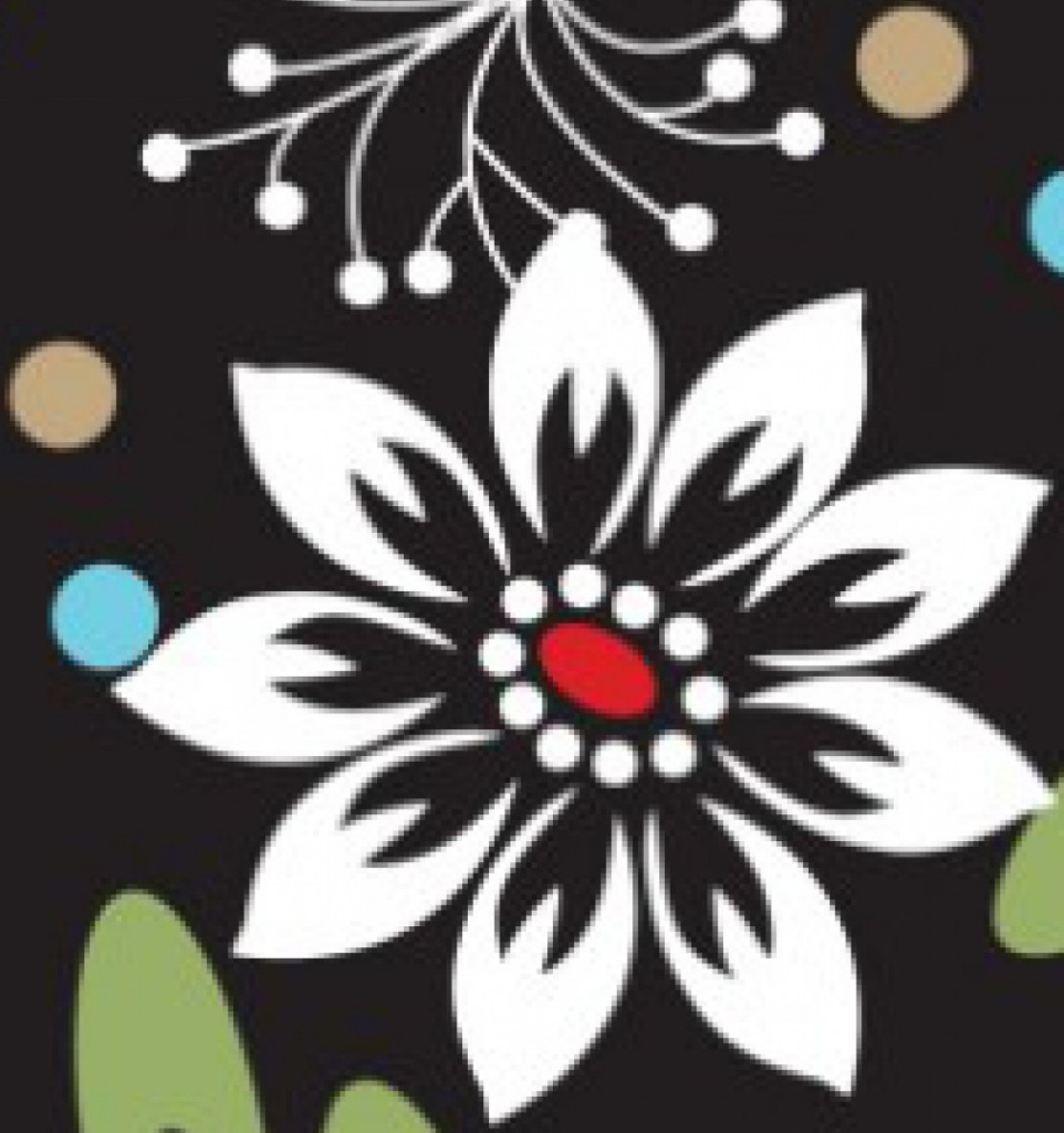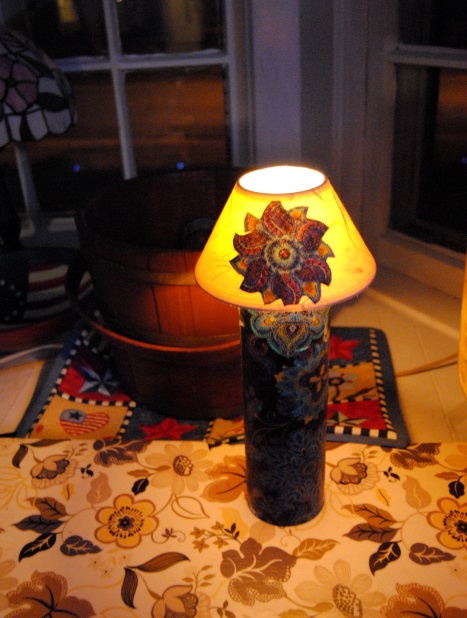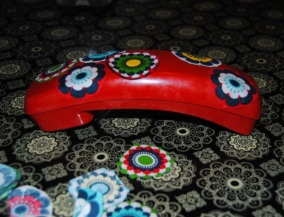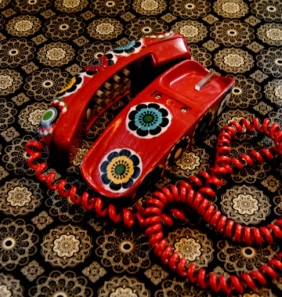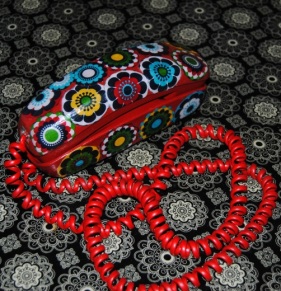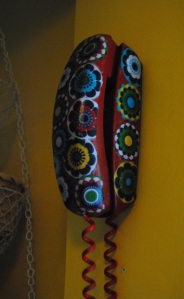Many years ago, my mom gifted me a stylish lamp that she no longer had a use for. I am a big fan of decorative lighting, so I was happy to have it. The lamp attached directly to the wall, so it was also a wonderful space saver. The decor of the lamp was fairly neutral, so it fit most of my living room design changes through the years. The lamp shade was a cream color with hanging beads along the shade rim.
For a long time, I had wanted to try a lamp shade decoupage, and I felt this would be the perfect lamp for my first attempt. I had some smaller pieces of black and white damask fabric left over from several previous projects. These projects were: The Broken Chair Challenge, You Had Me At Half Table, and Vintage Sewing Box (Just to name a few)
Keep in mind, if you plan on restyling a lamp shade it is important that the shade is light in color, and there are no dark designs on it. Otherwise, when the shade is illuminated the previous pattern will show through the new fabric.
Before getting started, I removed the shade from the lamp and gently cleaned it with a damp cloth. It is important to remove any dust and dirt from the shade before applying the Mod Podge. Once this was complete and the shade was dry, I generously applied Mod Podge to the outside of the shade with a broad paint brush.
I then placed a piece of the damask fabric over the lamp shade smoothing it out carefully with my hands to avoid wrinkles. Since fabric is being applied to cloth, it is important to apply enough pressure so that the fabric adheres well to the shade.
I placed the shade in front of the fan so that it would dry quickly. Once this step was complete, I applied a generous amount of Mod Podge over top of the fabric. I allowed it to dry thoroughly between coats, adding three coats of Mod Podge in total.
Once the shade was completely dry, I carefully trimmed away the excess fabric with a pair of scissors, and added additional Mod Podge along the edges of the fabric.
The lamp looks amazing, and now matches my current living room decor perfectly! This entire project was a quick one too! Overall completion took about one hour!
Materials:
Light Colored Lamp Shade
Mod Podge
Paint Brush
Fabric Of Choice
Scissors
